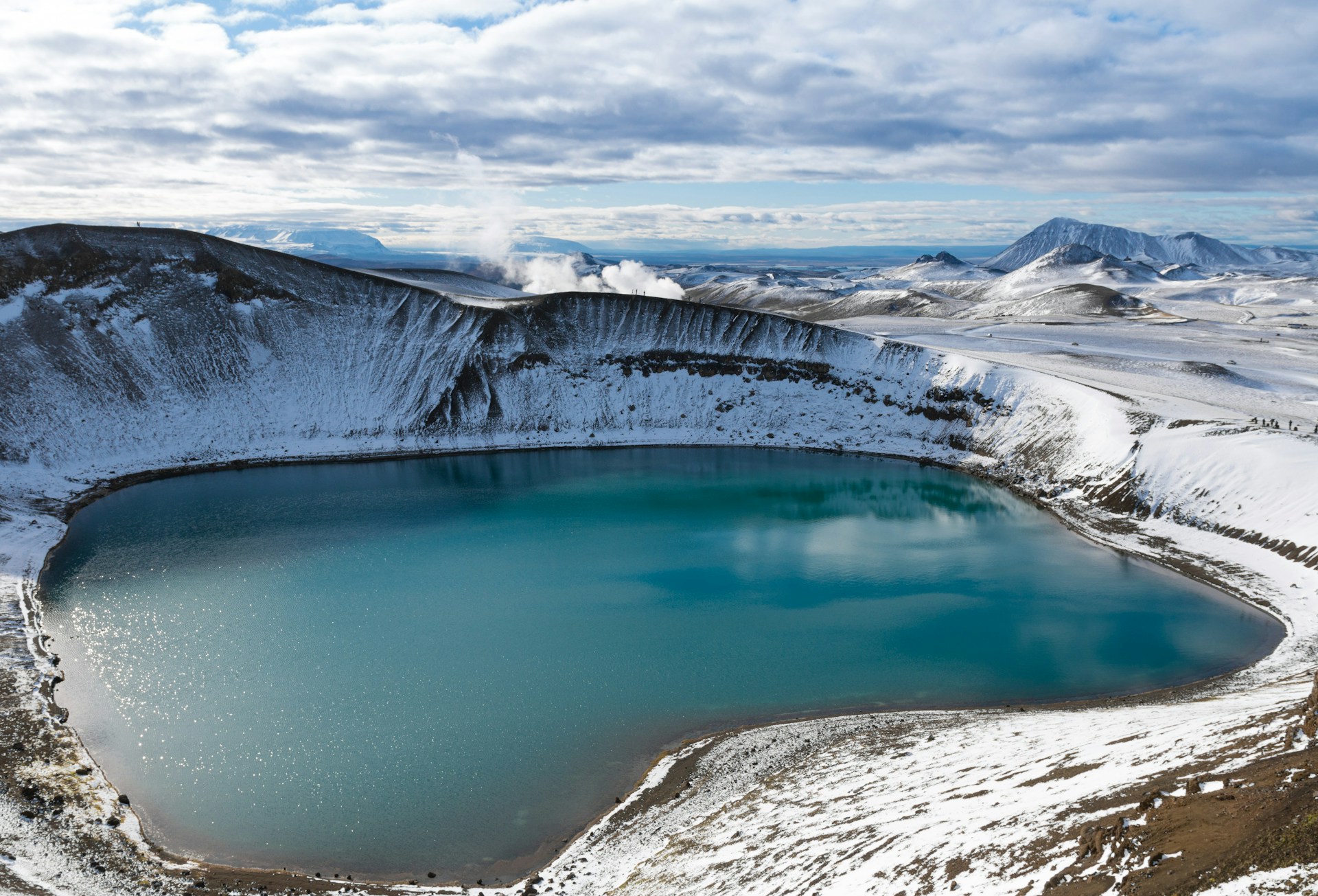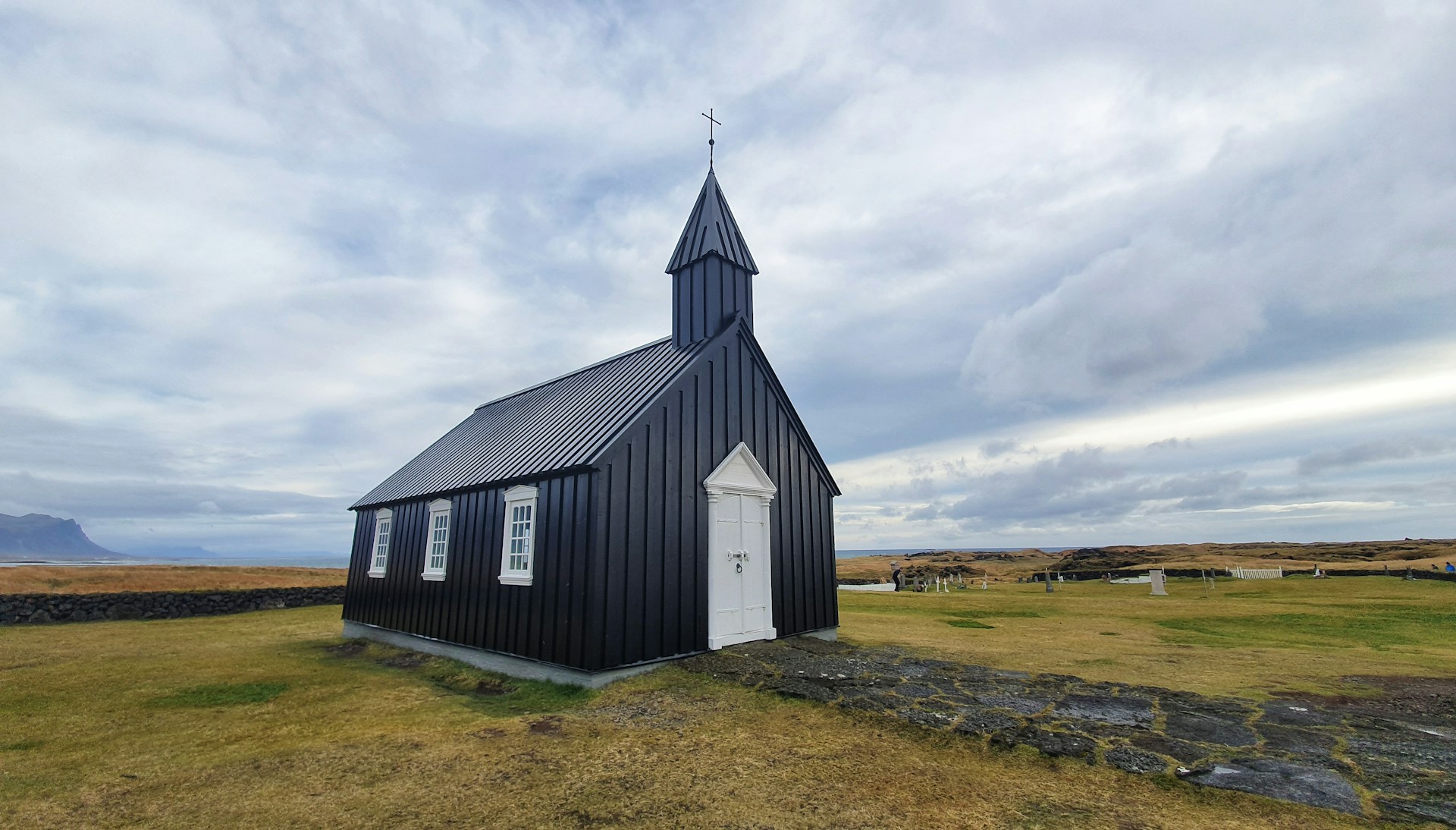Thingvellir National Park, located on the Golden Circle route, is a popular tourist spot in Iceland due to its unique landscapes and rich historical and geological significance. Our comprehensive guide provides valuable information about the park's history, features, and suggestions for activities to help you make the most of your visit.
You can visit Thingvellir National Park, which is part of the Golden Circle and a UNESCO World Heritage Site. It's a unique geological site located in Iceland where you can stand between two continental plates. The landscape changes every year. You can explore this place all year round and also learn about its historical significance.
Quick Points
- Destination Name: Thingvellier National Park
- Location: Golden Circle Route, Iceland
- Opening Hours: 24 Hours
- Open Days: All Week Except Fridays
- Family Friendly: Yes
- Accessibility For Disable Persons: Partial
- Best Months For Visit: April, May, Sept, & Oct
- Ideal Season: Round The Year
Area: 9270 Sq km
OUR GUIDE TO ÞINGVELLIR
Thingvellir, situated in southwestern Iceland, is a historically and geologically significant site. It is revered as the birthplace of Iceland and home to the world's oldest continuously operating and world's oldest parliament ever. The unique national park encompasses the area where the Eurasian and North American tectonic plates are diverging from each other.
You can take a walk in the seismic rift valley which serves as a boundary between the two continents. Due to the gradual movement of the plates, the valley widens by 0.78 in (2 cm) every year which alters the landscape and makes for a remarkable sight.

Thingvellir National Park offers an amazing diving opportunity at Silfra Fissure, in addition to its stunning hiking trails. At Silfra, you can experience snorkeling or diving between two tectonic plates, in the crystal clear water that makes it the clearest in the world!
Þingvellir National Park is a must-see destination in Iceland and one of the most iconic locations on the Golden Circle route. If you're in Iceland, be sure to visit!
WHERE IS THINGVELLIR NATIONAL PARK LOCATED?
64°15'21.6"N 21°07'46.5"W
Thingvellir National Park is situated in the southwest of Iceland and approximately 28 miles (45 km) south west and northeast of Reykjavik. It is commonly the initial destination for Golden Circle travelers and is located just off the renowned Ring Road.

HOW TO GET TO ÞINGVELLIR?
To visit Thingvellir National Park from Reykjavik, you can either rent a car or take one of our tours. Please note that there is no public transportation available between the two locations.
To get to Þingvellir National Park from Reykjavik, take Road 1 North out of the city. Go through Mosfellsbær and take the first exit at the roundabout just outside of town. Then, get on Road 36 and follow the signs to Þingvellir. It should take about 45 minutes to reach the park.
There is a scenic summer road that runs from Reykjavik and offers great views of Lake Thingvallavatn.

To get to Thingvellir National Park from the south coast, take Road 1 towards Hveragerdi/Selfoss. Once out of the city, turn left onto Road 431 and continue until you reach Road 435 (Nesjavallaleid). Note that Road 435 is only open from May to September, depending on weather conditions. Cross Hengill volcano and take a left onto Road 360 (Grafningsvegur). You'll enjoy beautiful scenery along the banks of Lake Thingvallavatn for approximately 7 miles (11 km). Next, join Road 36 and follow the signage to Thingvellir National Park, which is approximately 5 miles (8 km) from there.
The national park itself is open 24/7 and there is no entrance fee. However, there is a parking fee for motor vehicles and an entrance fee for the exhibition.
HISTORY OF ÞINGVELLIR
Thingvellir holds significant importance in both the minds of the Icelandic people and common cultural heritage and the history of the country. Sometime around 900 AD, the settlers of Iceland began considering the idea of establishing a general assembly. It is believed that the establishment of the Icelandic parliament marked the birth of the nation of Iceland. The initial parliamentary sessions, which took place in the summer of 930, helped create a shared cultural heritage and national identity.

The first assembly of the Althing, Iceland's parliament, took place at Thingvellir, a valley where the Eurasian and American tectonic plates separate.
The Law Rock, known as Lögberg, was a crucial site for speeches and announcements during the Althing. Each summer, more than 5,000 people from across the country gathered at Thingvellir for the two-week assembly, where the Law Council made rulings, confirmed the calendar, addressed legal matters, and announced news relevant to the whole nation. The Lögberg also served as a platform for any attendee to present important issues.
The Althing was the main lawmaker and court system in Iceland until 1262, when Iceland became part of Norway following clashes between chieftain families. Under Norwegian rule, executive power increased, but the Althing still held legislative and judicial power. However, as time passed, this legislative and judicial authority was given to Norwegian and then Danish rulers, eventually leading to the Danish king becoming the absolute monarch of Iceland in 1662.
Þingvellir and the Start of the Icelandic Nation
Grímur Geitskór, who was the half-brother of Iceland's first lawspeaker, was assigned the task of finding a proper and convenient location for the Althingi, which was the local governing body. Meanwhile, the owner of the land at Bláskógar (which was the old name for Þingvellir) was found guilty of killing his servant and lost his rights. This meant that Þingvellir became public property and presented a good opportunity for Grímur.

Bláskógar was chosen as the location for the assembly meeting because it was relatively central and could be reached from the farthest corners of Iceland in around 17 days. The location was suitable for the meeting because there was enough firewood and water available. The assembly site was named Þingvellir, which means "fields of assembly," and it became the site for the first Icelandic national parliament, Alþingi. In 930 CE, more than thirty chieftains gathered to participate in this historic event, which is considered by most scholars as the beginning of the Icelandic nation.

The annual meetings at Þingvellir were considered successful, and as a result, chiefs returned every year. This led to the creation of Alþingi, which became an institution. During this time, districts exchanged news about the previous year, revised existing laws, and formulated new ones.
Alþingi – The First Parliament
The period of the Icelandic Commonwealth lasted from 930 to 1262, during which the supreme institution of the Althingi was the law council called Lögrétta and the focal point first parliamentary proceedings was the Law Rock (Lögberg), used as a platform for speeches. The council was presided over by a Lawspeaker who was elected for three years and acted as the mouthpiece of the Althingi. All decisions were made collectively during this period.

Over time, power to make laws and settle legal disputes shifted from Alþingi to rulers of Norway and later Denmark. As a result, Althingi became more symbolic and celebratory in Icelandic culture. The final gathering at Þingvellir took place in 1798.
In 1843, the King of Denmark agreed to establish an advisory assembly in Iceland. In the next year, the first official election was held in the country, and the Althingi was reinstated, now located in Reykjavik. Aside from the gap between 1799 and 1844, the Althingi has been the world's longest running, continuously since its inception. It remains the world's longest continuously running parliament to this day.
THE CULTURAL SIGNIFICANCE OF THINGVELLIR
During the Commonwealth period, Thingvellir was the hub of Icelandic culture. Thousands of ordinary people from all over the country would gather there every year. They constructed dwellings made of turf and rock with temporary roofing and stayed there for two weeks during the assembly.
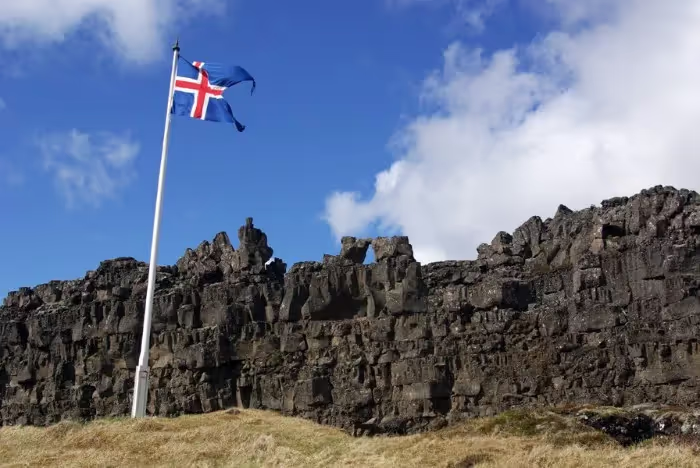
Although the assembly's duties were the primary motivation for going to Thingvellir, there were many other reasons why ordinary people came together there. They could buy goods and services from merchants, sword sharpeners, and tanners, watch clowns perform, and enjoy ale brewed by local ale-makers for the assembly attendees.
In ancient Iceland, people from different places would gather at Thingvellir to hold games, feasts, and meetings. This included young people as well as prominent national figures and legal experts. It was also a place where farm hands looked for work and beggars sought assistance. Thingvellir was a significant meeting place in Iceland's history and played a crucial role in leading national figures and shaping the language and literature that are still prominent in Icelandic culture today.
Thingvellir played a significant role in Iceland's journey towards independence during the 19th and 20th centuries, serving as a symbol of national unity. The final Althing took place at Thingvellir in the summer of 1798, following which the site turned into a tranquil location for an extended period.
THINGVELLIR AS A SYMBOL OF INDEPENDENCE
The sagas and landscape of Thingvellir were revitalized when the European independence movement reached Iceland in the early 1800s. As a result, Thingvellir became a prominent symbol of Icelandic independence and played a significant role in Icelandic society.

Due to the resurgence of nationalism, there were debates regarding the placement of the new Althing. Although opinions varied, Thingvellir was proposed as a potential site.
The Thingvellir meetings and the independence movement led to the resurgence of Thingvellir as the primary gathering spot for Icelanders. It became a place for them to come together and commemorate major milestones in their country's history.
In 1874, Iceland celebrated the 1,000-year anniversary of its settlement with a national festival held at Thingvellir. During the event, King Kristian IX presented Icelanders with their first constitution, which granted limited legislative chief judicial authority and financial powers to the Althing. This was a significant moment for Icelanders who had been advocating for independence, and many of them attended the festival at Thingvellir.
A festival was held in the summer of 1930 at Thingvellir to celebrate the Millennium of the Althing. Around 30,000 to 40,000 Icelanders attended this event, marking the first general celebration where a significant portion of the entire nation was present. The Republic of Iceland was founded on June 17, 1944, at Thingvellir, which also happens to be the birthday of national hero Jon Sigurdsson.
The inaugural presidential election was held at Lögberg, where Sveinn Bjornsson was elected as Iceland's first president. Following the event, the first cabinet meeting of the Republic of Iceland took place, during which the president approved the legislation regarding the national flag and coat of arms.
In 1974, Icelanders commemorated the 1,100th anniversary of their settlement. On June 17, 1994, a celebration took place at Thingvellir to observe the 50-year anniversary of the establishment of the Republic of Iceland.
A festival was organized in 1999 to mark the Millennium of Christianity. The festival consisted of various events held across the country. The finale of the celebrations was a two-day festival that took place in Thingvellir in early June 2000.
GEOLOGICAL HISTORY OF THE THINGVELLIR NATIONAL PARK
Iceland is located on the Mid-Atlantic Ridge, a large crack that runs for 16,000 kilometers (9,950 miles) between the Eurasian and North American plates. Due to the plates' movement, Iceland has more earthquakes and volcanic eruptions.
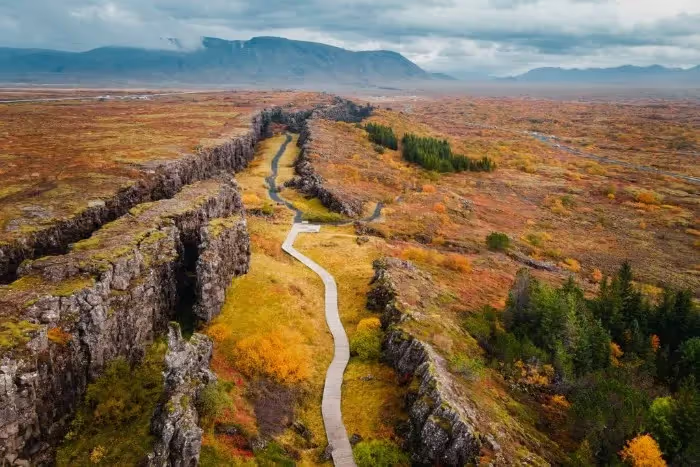
Shield volcanoes in the Thingvellir area were formed about 10,000 years ago due to a shield volcanic eruption that occurred after the Langjökull glacier had retreated to its current position. This eruption went on for several decades, possibly even a century, and created the stunning volcanic landscape that is now seen around the national park.
Around 3,000 years ago, there was a series of eruptions that occurred in Thingvellir valley. A fissure that was 8 kilometers (4.7 miles) long opened up, and multiple eruptions took place subsequently. The most recent eruption took place about 2,000 years ago, resulting in the formation of an ash crater at the bottom of Lake Thingvallavatn. There hasn't been any volcanic activity since then, but it's a matter of time before it will happen again.
THE GEOLOGY IN THINGVELLIR TODAY
During the summer of 2000, two strong earthquakes happened in South Iceland. Despite originating from a location 40-50 kilometers southeast of Thingvellir, stones still fell from the ravine walls and water splashed up from the rifts. The earthquakes were caused by the movement of the Eurasian and North American plate boundaries that pass through Iceland.
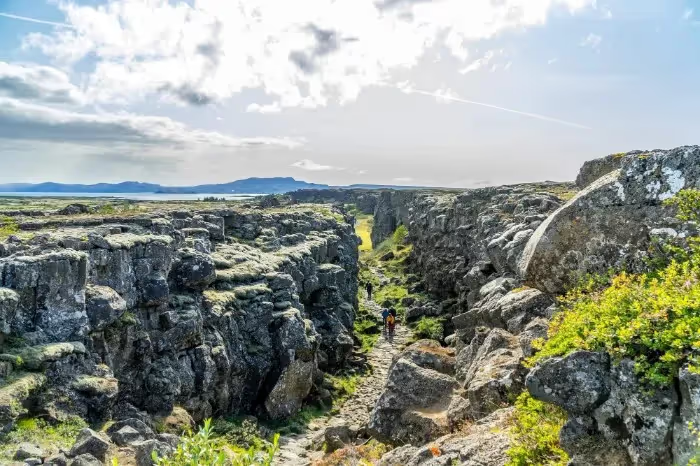
In the southern region, tectonic plates slide alongside each other, but at Thingvellir they rift apart and the land in between sinks down. The movement is consistently around 2 centimeters (0.78 inches) per year away from the rift zones. However, within the rift zones, tension builds up gradually over time and is then released suddenly when the plates fracture.
WHAT TO DO AT THINGVELLIR NATIONAL PARK?
At Þingvellir, visitors can enjoy a variety of activities including world-renowned diving sites, excellent hiking trails and top-rated fishing spots.
Scuba dive or snorkel in the clearest fresh water in the world in Silfra Fissure
At Lake Thingvallavatn's edge is a big rift that gets filled with glacial water from Langjökull glacier. The water flows through dense lava fields and reaches Silfra. The fissure offers excellent visibility of up to 328 ft (100 m) for divers and snorkelers because of the pureness of the water. It is a unique experience to snorkel between two tectonic plates that is not available anywhere else.

Hiking is one of the main activities at the park
The trails in Þingvellir are fantastic and offer exceptional views. One of the most frequented trails leads to the Öxarárfoss Waterfall, which Game of Thrones fans will recognize from Seasons 1 and 4 of the HBO series as the Bloody Gate that marks the entrance to the Eyrie. You'll hike through the Almannagjá gorge, and the path will take you to the point where two tectonic plates meet, allowing you to walk between two continents!
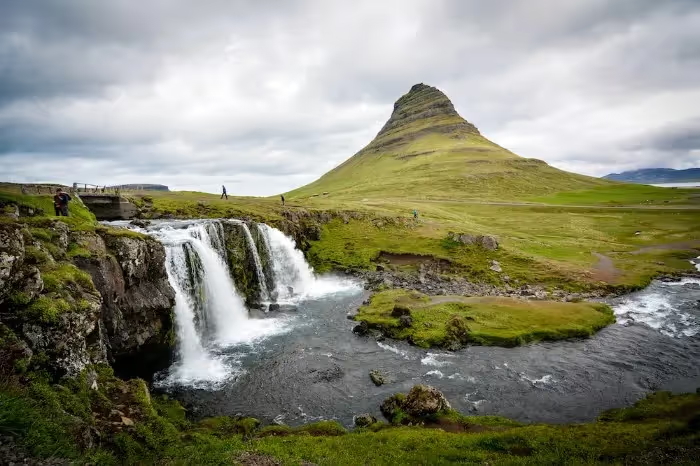
Fishing in Lake Thingvallavatn
Þingvallavatn is a great spot for fishing that attracts angling enthusiasts worldwide. It is home to the world's largest wild brown trout, as well as Arctic char and the three-spined stickleback, all found in the lake's clear freshwater.

Go On A Horseback Riding Tour
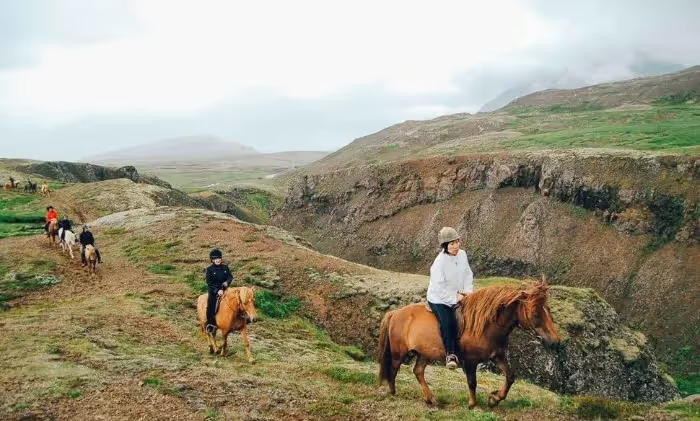
If you want an immersive experience of being a character in Game of Thrones, look no further than the ancient pathways that traverse Thingvellir National Park.
For centuries, this has been the resting point for travelers on horseback across Iceland and today those placid trails still remain—ready to be explored by visitors looking to journey through history from atop majestic steeds. What are you waiting for? Saddle up and embark on your own adventure!
Please Note: If you desire the unique experience of horseback riding, this activity is provided by a tour company outside of the park.
Walk Between Two Tectonic Plates At The Mid Atlantic Ridge
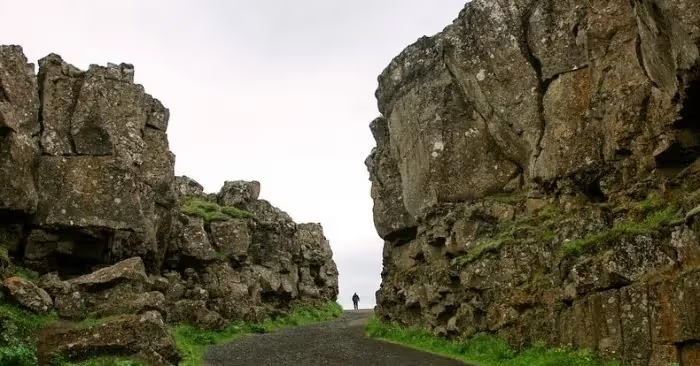
Exploring Thingvellir National Park offers a truly unique experience, especially when you venture into Almannagja Gorge and traverse between two continents in the rift valley.
Here lies the boundary of the North American tectonic plate and Eurasia's plate, both visible from various points in the gorge as they emerge from Iceland’s terrain. It is certainly one of the most awe-inspiring sights to behold!
Step out of this world and onto the unique path between two continental tectonic plates at Almannagja. Home to one of the few places on our planet where Earth's crust is clearly visible, a visit here is sure to be an unforgettable experience for all.
Witnessing these massive chunks of land juxtaposing against each other should not only be on everyone's must-do list when visiting Thingvellir but also makes it Iceland’s coolest attraction!
THE UNIQUE VEGETATION OF LAKE THINGVALLAVATN
Despite the very cold temperatures, Lake Thingvallavatn is home to a diverse range of vegetation, with a third of the bottom covered in algae and low-growing plants extending out to a depth of 10 meters (32.8 feet). Higher-growing vegetation forms a belt from 10-30 meters (32.8-98.4 feet). In total, 150 types of plants and 50 types of invertebrates have been found from the shore to the center of the lake.

Three out of the five species of freshwater fish found in Iceland, namely brown trout, Arctic char, and three-spined stickleback, can be found in Lake Thingvallavatn. These fish are believed to have become isolated in the lake after the last ice age, when the landscape rose at the southern end of Thingvallavatn.
SILFRA: THE RIFT BETWEEN THE TECTONIC PLATES
After a significant earthquake, a big crack named Silfra emerged next to Lake Thingvallavatn. Although it was not an eruption, the fissure started to be filled with melted water from Langjökull glacier, which is located approximately 50 kilometers (31 miles) away.
The water in the Silfra fissure undergoes natural filtration through a dense lava field, which has an extremely fine texture. It takes around 30 to 100 years for the glacial water to reach the Silfra fissure. This is considered to be the finest and largest natural lake filtration process on the planet.
The water in Silfra is extremely clear, allowing for visibility along the entire fissure. It is considered the clearest fresh water in the world, with underwater visibility of over 100 meters (328 feet) which is truly amazing.

The water from the glacier constantly flows, creating a gentle current in the natural spring. This keeps the water temperature at 2-4°C (35-39°F) and prevents it from becoming dirty or allowing bacteria to thrive.
Silfra is a highly sought-after destination for divers and snorkelers due to its convenient accessibility and breathtaking location. In fact, TripAdvisor rated it one of the top ten activities in the world in 2019. It's important to note that visitors must have a safe drysuit or be accompanied by a trained local guide to swim or snorkel at Silfra.
Due to Thingvellir being a highly protected national park, only select companies are authorized to take visitors to Silfra. Booking a tour with us is the optimal method to experience this exceptional location.
WHERE TO STAY NEAR THINGVELLIR NATIONAL PARK?
Hotels
The following are the names of four hotels:
- Ion Adventure Hotel,
- Hotel Borealis,
- Hotel Edda Laugarvatn,
- Hotel Grímsborgir.
Guesthouses
These are some accommodation options Guesthouses,
- Lake Thingvellir cottages,
- Þingvellir Golden Circle Cottage,
- Holiday Home Laugarvatn,
- and Hrísholt Private House.
Campsites
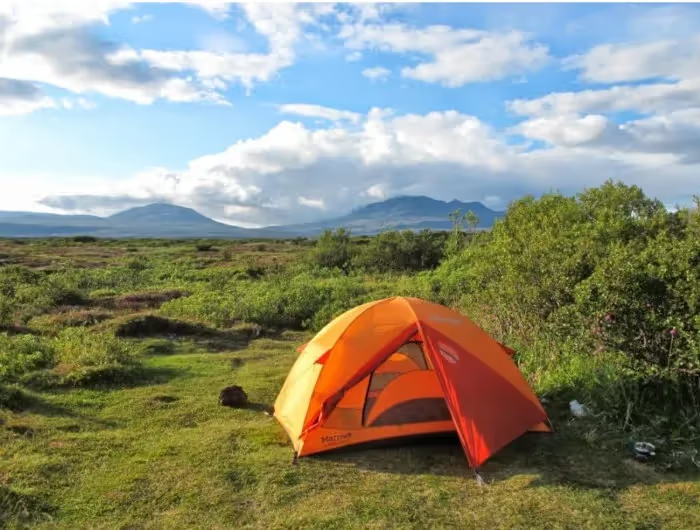
There are two campsites available.
- Leirar campsite is open throughout the year,
- while Vatnskot campground is only open from June to September.
WHERE TO EAT NEAR ÞINGVELLIR?
- There is a small cafeteria called National Park café located inside the information center. They serve grilled sandwiches, salads, hot dogs, and soup.
- The Silfra restaurant, located in the Ion Adventure Hotel, serves Nordic cuisine.
- Inside the same Ion Adventure Hotel, there is a bar called Northern Lights Bar. This bar offers a selection of beers, liqueurs, and spirits from microbreweries located around Iceland.
INTERESTING PLACES NEAR THINGVELLIR NATIONAL PARK
- Lake Þingvallavatn
- Lake Laugarvatn
- Brúarfoss Waterfall
- Flúðir Geothermal Village
- Kerið Volcanic Crater
Try Golden Circle Day Tours!
Here is a viable option for you in case you are looking for a credible tour service. Try Golden Circle Day Tours.
Golden Circle Day Tours is a leader in the field of tours in Iceland and has been around for over a decade now. With professionally trained staff, it safely takes you through Iceland with a selection of well-planned and guided tours.



